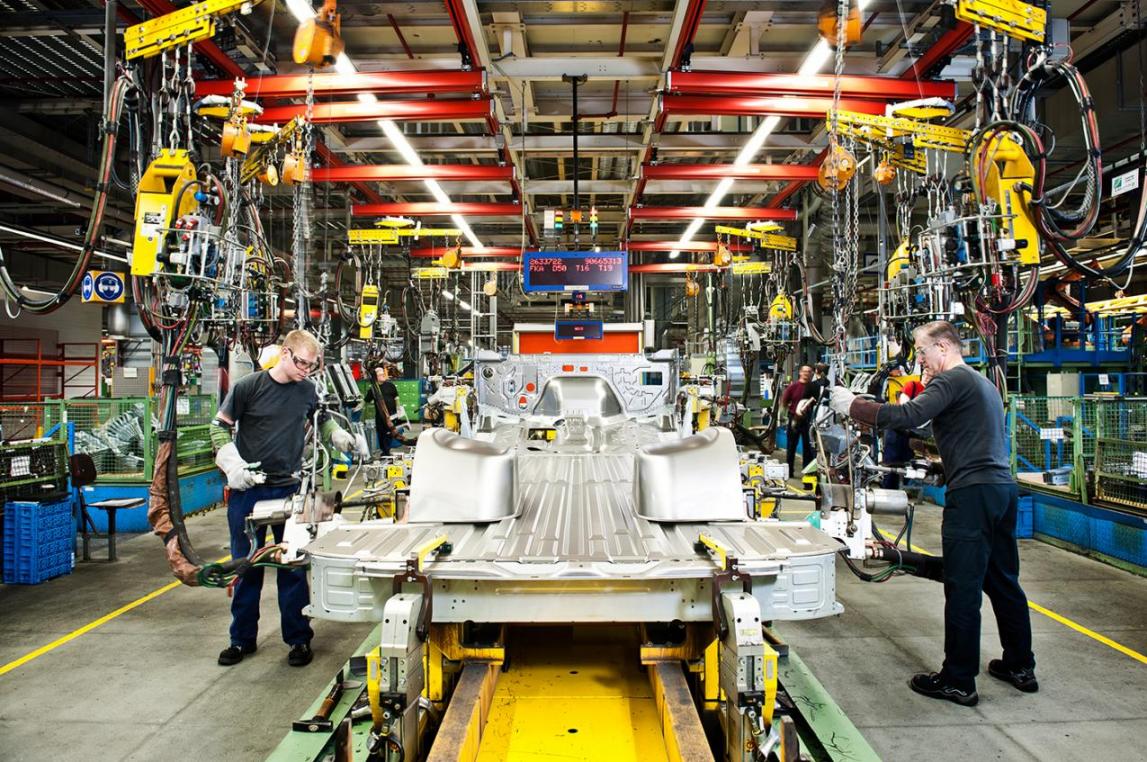Germany and its neighbor Austria have full employment with unemployment rates below 5% and the smaller country has had one of Europe’s lowest unemployment rates for a half century. Meanwhile a recent research note suggests that the US could learn from the success of German manufacturing where average manufacturing pay is almost a third higher than in the US.
In 1965-1972 when Austria’s average rate was 1.4%, West Germany’s was at 0.8% and France was at 2.3%. Austria, which is one of the wealthiest countries in Europe also has one of the lowest ratio of the population with third level degrees, FinFacts reported.
Germany had record trade and current account surpluses in 2013 while the government’s budget surplus amounted to €18b ($20b) in 2014 — 0.6% of gross domestic product — according to Destatis, the German federal statistics office, reported last week. This compared with a €4.2b surplus in 2013.
Following a rise in Germany’s Q4 GDP, (+0.7% qoq vs +0.1% in Q3) as private consumption received a substantial stimulus from the drop of the oil prices, Deutsche Bank on Monday increased its 2015 GDP forecast to 2.0% from 1.4% previously. “This is especially due to the much larger carry-over effect courtesy of the marked Q4 GDP growth.
Wages Rise
Destatis also reported last week that German negotiated wages covering about 19m from 42.7m in employment, including special payments, rose by 3.2% on average last year — the biggest increase since the statistics were first compiled in 2010.
The average consumer inflation rate was 0.9% in 2014. The increase compared with a 2.4% pay rise in 2013 and 2.7% in 2012. A new minimum wage of €8.50 an hour is being phased in by January 2017.
Consumption outlays contributed a 0.5 percentage point contribution to GDP growth of 0.7% in the fourth quarter, the data showed.
Average earnings in German manufacturing are the highest of the big manufacturing nations and while German and US general pay changes tracked each other from the mid 1990s, the inflation-adjusted rise in 1985-2010 for Germany was 30% compared with 6% in the US.
The average compensation for a manufacturing worker in Germany in 2012 was $46 per hour — 28% more than in the United States. The German economy grew 13.5% over the same time frame in inflation-adjusted terms, leaving many Germans feeling they missed out on economic gains.
Lessons for US Manufacturing
A briefing note by economists at the Brookings Institution and JP Morgan Chase, the US bank, says that manufacturing in Germany accounts for 20% of employment, nearly twice the share as in the United States, and generates 22% of national GDP and 82% of total goods exports.
In stark contrast to the United States’ $667b manufactured goods trade deficit, Germany’s trade surplus in manufacturing is about $425b.
The note says the Fraunhofer Society has 67 institutes and 23,000 employees in Germany as well as an international presence that includes seven US-based centers. “Each institute cultivates a distinct specialization (e.g. applied polymer research, electric nanosystems, etc.) which fall under broader industries such as microelectronics, materials and components, production, surface technology and photonics, life sciences, information technology, and defense.46 .Approximately 70% of Fraunhofer’s revenue is generated by contracts with industry and public institutions; state and federal governments contribute the remaining 30%.”
It adds: “Even when American researchers develop radical innovations, defined as the creation of a new industry due to technological or scientific breakthrough, US manufacturers are often unable to bridge the ‘valley of death’ between the basic research phase and industrial production due to lack of capital and other key resources.”


